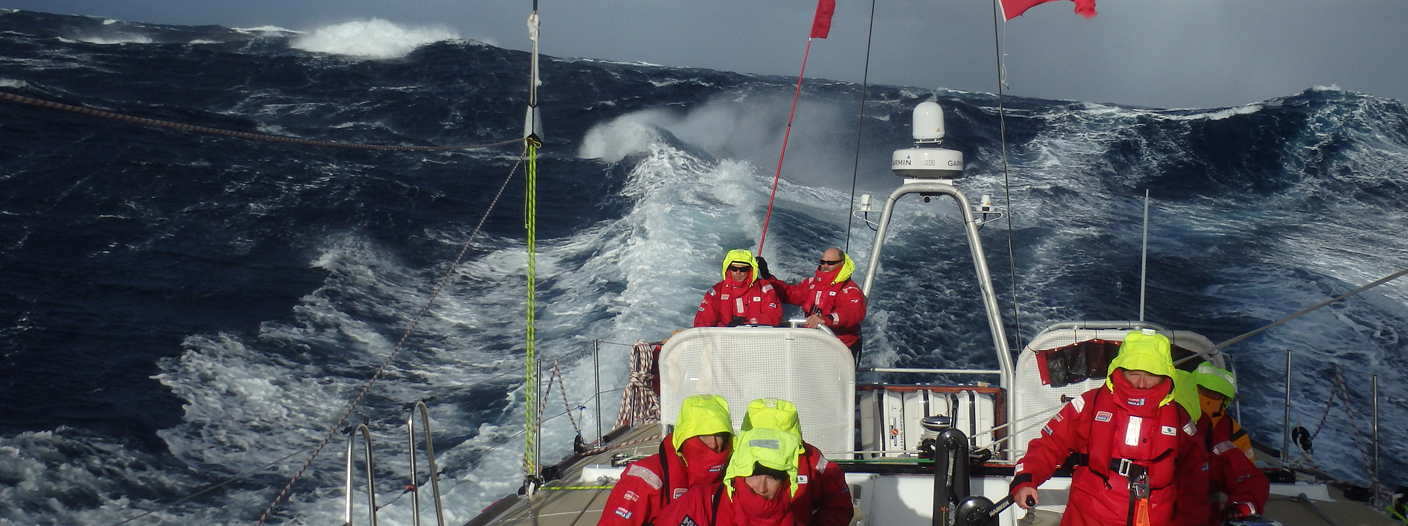Red sky at night, sailors delight
21 January 2015
The
saying, “Red sky at night, sailors delight. Red sky in morning, sailors take
warning,” is often thrown around when discussing the weather and sailing; if only
forecasting was that easy!
“Getting the forecast
right is always a big challenge. It’s a very important job as skippers will use
the predictions I give them to make decisions on their team’s tactics, so
there’s always lots of pressure for me to give as accurate and detailed
information as possible,” says Simon Rowell, the Clipper Race’s Meteorologist.
“Forecasting also gets even more difficult when the boats are racing in the world’s
most remote areas, such as in the Southern Ocean, and when going over the top
of Papua New Guinea. There are very few actual observations in those areas, so
I depend on the daily weather observations that the skippers report back to
help fill in the gaps.”
Simon’s association with the Clipper Race goes back to 2002 when he led Jersey to victory. He also held the role
of Assistant Race Director from 2004 until 2007 and since the 2011-12 edition
of the race, Simon has acted as Meteorologist, providing valuable information
and advice to the skippers and crew each day they are racing.
“Each team receives exactly the same information, which includes predicted wind
speeds, pressure, precipitation and 500 millibar height info in a format that
they can overlay onto their navigational software.
“Also, I provide synoptic charts and images of the expected current, as well as
various satellite images. On top of this I give them my view on the
overall weather situation as I have access to the whole range of weather data I
try and condense that into a useful form for them.”
Each day during the Clipper 2015-16 Race the twelve teams receive Simon’s
update at 0600 UTC, allowing them to make important tactical decisions in an
attempt to gain miles on their competitors.
Simon also provides pre-race training to the skippers to give them extra
insight into the weather systems during the route.
“For the previous two editions I spent a day with all the skippers, going
through each leg in detail, looking at the expected weather, the sources of
weather information and the various phenomena that they will see - for example
the Doldrums on Leg 1, and the Kuroshio Current, combining with northerly gales
around Taiwan.
“Several of the skippers have asked me to do more general weather tuition days
for their crews too, and those are always fun – crew members always ask lots of
questions and bring a lot of energy to those days.”
Simon admits the Southern
Ocean legs have provided the most memorable moments of his role during the
race.
“I was looking at the forecast data during the last race and remember seeing
that 90 to 100 knot gusts were a real possibility. When they happened and
the reports back from the boats spoke of how the crews had dealt with these
really extreme conditions so well, it was very good to hear.”
So from victorious Race
Skipper to successful Assistant Race Director and now weather guru, Simon has
seen the Clipper Race from all angles.
“My role now is a whole lot easier than either previous role!” admits Simon.
“I've been associated with the race for a while and so I have a pretty good
idea of the pressures on the Race Skippers and the Race Team. I try and
give them the weather information they need to make the most informed
decisions, both for the sailing of the yachts and for the management of
the race itself, and to put it in as practical a way as possible.”
“I’ve experienced all types of weather conditions during my time on the Clipper
Race so know full well what the crew and skippers will be experiencing when I
see the weather reports.”
